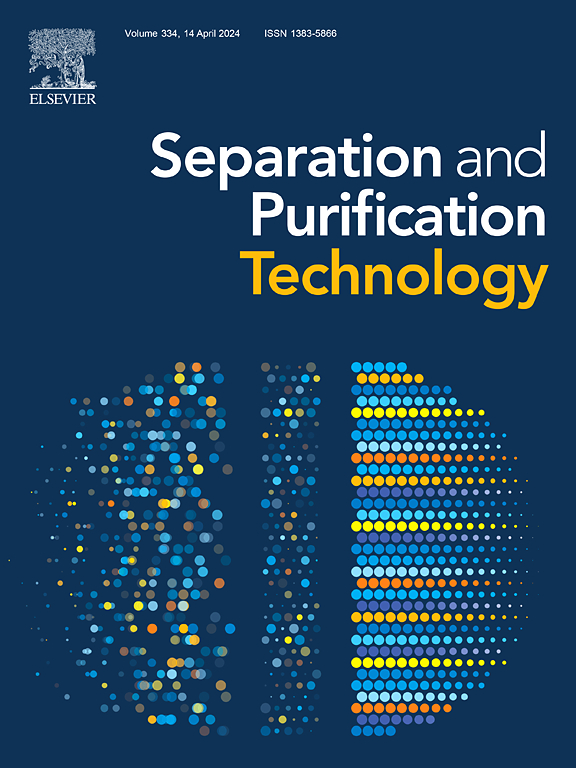Constructing a novel Ti3C2Tx nanocomposite via intercalation of guanidine phosphate to realize selective and effective uranyl extraction
IF 8.1
1区 工程技术
Q1 ENGINEERING, CHEMICAL
引用次数: 0
Abstract
There are abundant uranium resources in salt lake brines, but the high salinity background brings huge challenges to the selective extraction of uranyl. In this work, a novel Ti3C2Tx nanocomposite was constructed by the intercalation of guanidine phosphate (GP) to achieve the selective and effective uranyl extraction. Characterization analyses showed that the intercalation of GP was driven by ion exchange or electrostatic interaction. At the temperature of 35 °C, the adsorption of GP-Ti3C2Tx quickly reached equilibrium after 2 h (qmax = 270.7 mg/g). Mechanism investigations showed that the adsorption of uranyl on GP-Ti3C2Tx mainly included electrostatic attraction of oxygen-containing functional groups, chemical reduction by GP, and the coordination of phosphate and guanidine groups. Noteworthy, the adsorption capacity of GP for trace uranium (296.3 ± 13.8 μg/L) in actual brine was 806.3 μg/g. Even if the concentrations of coexisting Na+, K+, Mg2+, Ca2+, VO43− and SO42− far exceeded the concentration of salt lake sample, GP-Ti3C2Tx exhibited satisfactory selectivity. Overall, this novel Ti3C2Tx nanocomposite provides new insights into the extraction of uranium from salt lake brines.


求助全文
约1分钟内获得全文
求助全文
来源期刊

Separation and Purification Technology
工程技术-工程:化工
CiteScore
14.00
自引率
12.80%
发文量
2347
审稿时长
43 days
期刊介绍:
Separation and Purification Technology is a premier journal committed to sharing innovative methods for separation and purification in chemical and environmental engineering, encompassing both homogeneous solutions and heterogeneous mixtures. Our scope includes the separation and/or purification of liquids, vapors, and gases, as well as carbon capture and separation techniques. However, it's important to note that methods solely intended for analytical purposes are not within the scope of the journal. Additionally, disciplines such as soil science, polymer science, and metallurgy fall outside the purview of Separation and Purification Technology. Join us in advancing the field of separation and purification methods for sustainable solutions in chemical and environmental engineering.
 求助内容:
求助内容: 应助结果提醒方式:
应助结果提醒方式:


